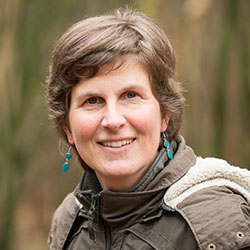Midden-Delfland collaborates to achieve innovation
How do you ensure changes in an area which make a new, sustainable future possible? By allowing the people who live there, work there, and are involved in the area to work together and to learn and innovate together, while also providing them with expert guidance.
Wageningen University & Research does that in Midden-Delfland, an open green area between Rotterdam, Delft, and The Hague. On 21 June, farmers will demonstrate the steps which have been taken in the last year within the innovation network Midden IN Delfland (MinD).
Peat meadow area
Midden-Delfland features an open, centuries-old peat meadow landscape: pastures, cows and canals with small villages. Since 2015, a stretch of highway has run through it: the A4 from Delft to Schiedam. This highway was the topic of more than sixty years of discussion prior to its construction. It illustrates the pressure on the buffer zone, as it used to be called.
 To avoid being entirely built-up, the area must continue to prove its value, both culturally and economically. “It should be attractive and accessible to the townspeople around it in order to remain important”, says Judith Westerink, project manager from Wageningen Environmental Research. The developments in agriculture, mainly dairy farming in this area, do not automatically lead to a beautiful and sustainable landscape in the future. “But without farmers this landscape would disappear.” MinD is working on a sustainable future for agriculture through the provision of landscape services, such as local food and care for meadow birds.
To avoid being entirely built-up, the area must continue to prove its value, both culturally and economically. “It should be attractive and accessible to the townspeople around it in order to remain important”, says Judith Westerink, project manager from Wageningen Environmental Research. The developments in agriculture, mainly dairy farming in this area, do not automatically lead to a beautiful and sustainable landscape in the future. “But without farmers this landscape would disappear.” MinD is working on a sustainable future for agriculture through the provision of landscape services, such as local food and care for meadow birds.
Vision for the future
For this reason, the researchers began urban and rural discussions in 2017. They brought farmers and local residents together to discuss and think about the meaning of Midden-Delfland and what they consider important about the area. For example, they asked farmers: what would you want to innovate and how do you see the future of your business? “The city desires and also gets a lot out of the area, but there is no clear contact between the city and the countryside. Based on our social science insights, we organised this contact in order to generate new knowledge to challenge farmers and to drive innovation. Worlds that do not often collide were able to discuss the problems together, inspire each other, and discover new opportunities.”
“With our knowledge, we try to contribute to behavioral change. This should result in more innovation, sustainability and collaboration.”
Experiments
In small groups, experimenting farmers and city dwellers now work together with new technology, new business models, and new products and services appropriate for the area and the businesses. “Every farmer is different. The intention is that teams develop concrete ideas and want to learn from each other and the experiment.”
Through this method, initiatives are implemented such as a nature inclusive farm, a social bokashi chain (fermentation of roadside cuttings with unprocessed manure as high-quality fertilizer for public green areas, public gardens and farms), a new generation of young cattle (healthy outdoor), more contact between farmers and the city, an energy-neutral farm, a mobile dairy plant that can make local cheese and yogurt, and a Herenboeren initiative (consumers who employ farmers as a cooperative).
The teams receive guidance as needed from the network and can, for example, enlist students for research through the researchers. “The ultimate goal is to get innovation and collaboration to be the norm, the default mode, or the MinD-set”, Westerink explains.


